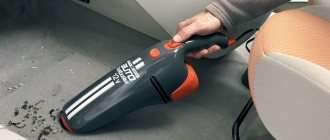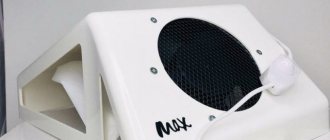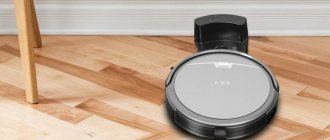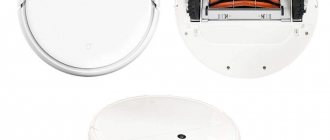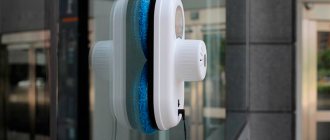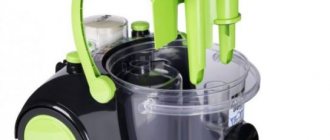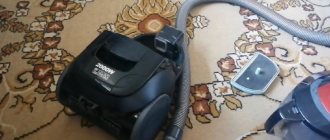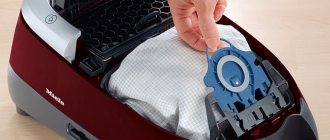Do you really need an industrial vacuum cleaner? Is it worth the money?
Many people do not understand the difference between industrial and home vacuum cleaners, especially since they are very similar in appearance. The development of modern technologies has led to the fact that the design of traditional dust collection devices has become closer to more professional models. However, this is perhaps the only similarity between these types of vacuum cleaners. The “stuffing” of industrial devices is completely different.
We’ll talk about the technical stuff later, but now we’ll look at the advantages of industrial vacuum cleaners. Why is buying or renting such a device more profitable than a regular home one?
Firstly, industrial vacuum cleaners are named so for a reason. These are professional tools for removing dust and dirt from any surface, even if these very surfaces are nothing but “bare” concrete. Such equipment allows you to effectively get rid of not only dust, but also metal and wood shavings, loose paint, varnish, to remove fungi, mold and other substances and impurities that arise in homes, warehouses, production shops, workshops, factories and during various types of construction and repair work. With such vacuum cleaners, unlike ordinary household ones, you can even clean paths around the house!
Secondly, industrial vacuum cleaners are much more powerful than conventional devices. This is necessary in order to get rid of, among other things, larger and heavier elements than a piece of paint and plaster (for example, pieces of concrete and stones). Moreover, they have more durable bags (and there are models without bags), so you don’t have to worry about the operation of the device if you accidentally vacuum up, for example, several screws or nails.
Today, the range of manufacturers and models of such vacuum cleaning equipment is quite large. They all differ from each other in various parameters (power, class, container capacity, etc.), as well as in the nature of the application. Some models of professional vacuum cleaners are equipped with special attachments and accessories for removing dirt and dust in particularly difficult cases and hard-to-reach places.
Therefore, the choice of a suitable industrial vacuum cleaner depends mainly on the nature of current and future work, additional options, as well as the individual preferences of the user. But still, the main division of these devices is into 2 types: vacuum cleaners with bags and without bags. Let's look at their differences in more detail.
Kinds
There are both household and professional construction vacuum cleaners on the market. They differ from each other primarily in power, air blowing speed and dust collector volume.
According to their purpose, devices can be as follows:
- For dry cleaning . This device function is basic. It is also present in those vacuum cleaners that have other capabilities.
- For dry and wet cleaning . These devices can handle both dry waste collection and liquid collection.
- Washing vacuum cleaners . With their help, you can not only collect dust, but also wet clean the floor of a fairly large room.
- For cleaning explosive and fire hazardous waste . Most often, they are used to collect metal powder. In addition, using such devices you can collect coal dust. They are also suitable for cleaning industrial organic waste.
- Heat-resistant vacuum cleaners . They are used to collect heated metal shavings in factories.
Thus, there are a large number of different construction vacuum cleaners.
When choosing construction vacuum cleaners, you need to pay attention, among other things, to the most popular models of these devices that are in demand among buyers.
Which industrial vacuum cleaner to choose: bagless or bagless?
In professional vacuum cleaners without a bag (the so-called “cyclones”), all dust and dirt, instead of a bag, goes into a special built-in container. These devices operate on the principle of centrifugal force and a specially designed cyclone system, which removes harmful dust from the air using a centrifuge method.
Bagless vacuum cleaners are considered more durable and stable. Devices of this type are characterized by constant and high suction power throughout the entire service life of the device. The same cannot be said about vacuum cleaners with a bag - in them this parameter quickly decreases as the bag fills with dirt, which makes the device less effective or even ineffective after several hours of operation. In practice, this means that each time you have to change the bag more and more often, even before it is completely filled, and so on several times during the cleaning process.
However, buying an industrial vacuum cleaner with a cyclone system just to save money on cleaning bags is a serious mistake. Bagless cyclonic vacuum cleaners have their own “weakness” - dust filters, which break down faster and are more expensive than those installed in conventional vacuum cleaners with a bag. And cyclone vacuum cleaners themselves are much more expensive.
Another factor to consider when choosing a bagless industrial vacuum cleaner is the price and manufacturer. Devices that are too cheap and untested often turn out to be of poor quality. The efficiency of cheap vacuum cleaner models leaves much to be desired, to the point that some types of dirt and dust can be returned back into the room, and filters become clogged faster. Among the disadvantages of this model of industrial vacuum cleaners, the need to regularly clean the chamber should also be mentioned.
Is it worth paying extra for bagless cyclone devices? To be fair, we note that simple operation of industrial vacuum cleaners with a cyclone system is an order of magnitude cheaper than industrial vacuum cleaners with bags. Another undoubted advantage of these models is their greater efficiency and durability.
Vacuum cleaners with automatic filter cleaning system
Rating of the TOP 3 models with an automatic filter cleaning system in terms of price-quality ratio.
BOSCH GAS 35 L AFC 1380 W
It copes first-class with its main task - quickly cleaning the room.
The powerful turbine provides fast dry and wet cleaning. Cleaning the filter after cleaning can be done with just one touch.
The heavy-duty design allows you to store other tools on top of the vacuum cleaner. ESD protection is provided.
Specifications
- type of cleaning: dry and wet;
- dust collector type: container;
- tank/dust container volume: 35 liters;
- blowing work: no;
- automatic shutdown: yes;
- weight: 12.2 kg.
Advantages
- maneuverable, despite its size;
- easy to operate;
- turns off automatically after filling the container;
- convenient to transport;
- non-slip wide handle.
Flaws
- high price compared to analogues;
- heavy;
- takes up a lot of space.
KARCHER WD 6 P Premium 1300 W
Provides optimal performance even in very dirty conditions.
Powerful industrial vacuum cleaner with high suction efficiency for both dry and wet cleaning. Thanks to a special cleaning system for the pleated filter, suction power is instantly restored.
You can remove the filter without direct contact with debris. The case has holders for neat storage.
Specifications
- type of cleaning: dry and wet;
- dust collector type: bag;
- tank/dust container volume: 30 liters;
- blowing work: no;
- automatic shutdown: yes;
- weight: 9.5 kg;
Advantages
- does not require changing the filter when changing the sucked debris;
- easy to move thanks to wheels;
- looks solid and durable;
- there is a socket for connecting a tool;
- large bag for collecting garbage.
Flaws
- no wheel locking function;
- no floating brush adjustment;
- sucks weakly.
Makita VC4210L 1200 W
A unit for wet and dry cleaning of large areas after repair and construction work.
The spacious 42-liter container makes this vacuum cleaner especially convenient for keeping your carpentry or metalwork shop clean after intensive work.
The device supports the collection of not only household waste, but also fine construction dust both in the container and in the dust collector.
Specifications
- type of cleaning: dry and wet;
- dust collector type: bag;
- tank/dust container volume: 42 liters;
- blowing work: no;
- automatic shutdown: yes;
- weight: 16 kg.
Advantages
- ideal for cleaning large areas;
- sucks in both small and large construction debris;
- quite maneuverable, despite its large size;
- universal model for cleaning after repair work;
- looks durable and reliable.
Flaws
- is expensive compared to analogues;
- heavy;
- Inconvenient to store due to large size.
How to choose a suitable industrial vacuum cleaner?
When looking for a suitable bagless vacuum cleaner, pay attention to its parameters. If the equipment packaging does not contain information about the effectiveness of the device, it is better to refuse such a purchase.
What parameters are we talking about? For example, suction power. The higher this parameter, the better the air circulation in the chamber of the device, which is necessary for accurate absorption and accurate filtration of impurities. The suction power directly depends on the motor power, which should be at least 1200 W, and even better, 1600-1800 W. Everything is simple here: the greater the power of the vacuum cleaner, the higher its performance and efficiency.
Let's take, for example, a bagless industrial vacuum cleaner from the Karcher brand, which is very popular among builders. It has high suction power and is equipped with a multi-stage filter system, making it suitable for use in the most difficult conditions. With such a vacuum cleaner, you can effectively remove dry impurities, pieces of varnish and paint, and even spilled liquids from the floor.
In addition, these devices are made of highly durable and shock-resistant housing. Some models are also equipped with automatic filter cleaning systems and the ability to remove not only dirt, but also harmful dust. Thanks to these indicators, Karcher vacuum cleaners are truly universal devices.
Among other popular devices among developers, we note the industrial vacuum cleaner from Bosch. The products of this German brand have a long service life, and the vacuum cleaners themselves can handle both “dry” and “wet” work. In addition, Bosch vacuum cleaners are very powerful. High suction power means that with such a device you can cleanly remove dust and dirt not only from the floor of the house, but also from any other surfaces. An additional advantage of the product is its durable wheels, thanks to which you can quickly and easily move the equipment to the desired place and room, and even roll it around the site.
One of the most practical devices of this type is the bagless industrial vacuum cleaner with socket 1420. It is equipped with a special socket to which we can connect any electrical tool, such as a sander. The special mode allows you to control the vacuum cleaner using a power tool and the two devices work together, so you don't have to constantly be near the vacuum cleaner to turn it on and off.
How to choose a construction vacuum cleaner
If you need to clean a garage, workshop, car showroom, or collect dust after home renovations, then take a look at not very expensive semi-professional models of vacuum cleaners. But here you need to be careful, since the cheapest devices may not have a bypass and may not be designed for some debris, as well as water. Before purchasing, you should carefully study the instructions.
If you want to purchase a construction vacuum cleaner that can suck up all types of debris and also have the ability to collect water, it is better to choose vacuum cleaners with a wet cleaning function.
REFERENCE! An industrial vacuum cleaner without a dust bag, with a container dust collector, is suitable for those who do not want to constantly buy bags or are concerned about their strength.
To clean large industrial premises, you need a powerful industrial vacuum cleaner with a large dust container.
Industrial vacuum cleaners of cyclone type. Prices
The cost of bagless vacuum cleaners varies widely. Cheap Chinese models can be bought for only 4000-5000 rubles, while professional vacuum cleaners made in Germany will cost no less than 18-20 thousand rubles. The price of an industrial vacuum cleaner also depends on the type of filter, engine power and additional equipment. So, for example, professional vacuum cleaners with a power of 1800 W from Karcher or Bosch will cost at least 25 thousand rubles.
As we noted above, in this class of devices, a lower price almost always means less engine power and a lower class. This means that such equipment, despite the fact that it suctions dust well, cannot always cope with removing larger and heavier dirt and debris from the floor.
Is an industrial vacuum cleaner suitable for home use?
Professional construction vacuum cleaners are useful not only at construction sites, but also for traditional house cleaning. However, unlike conventional vacuum cleaners, in this case, high power is more of a minus than a plus.
Experts do not recommend using such equipment to clean the house after repairs or finishing have been completed. The fact is that industrial vacuum cleaners are designed mainly for rough cleaning of dust and dirt, and their equipment, attachments, brushes and accessories can inadvertently damage parquet or scratch tiles. Such equipment is ideal for use in the following stages:
- construction sites;
- repair;
- rough finishing;
- pre-finishing and final finishing;
- at stages when the floor in the house has not yet been laid (not installed).
However, this does not mean that an industrial vacuum cleaner will not be useful in your home after the renovation is completed. It can be useful when doing some housework. Eg:
- remove shavings from the workshop floor;
- remove from the floor pebbles and pieces of crushed stone that have fallen from the wheels in the garage;
- remove ashes from the fireplace and much more...
Then the question arises: which industrial vacuum cleaner would be the best solution for the home? And here we come back to power again. If you need a professional vacuum cleaner for regular home use, it is better to choose low-power models: 1000-1200 W is enough. With such motor power, the equipment can effectively cope with almost any type of contaminant.
Which model will be better for home: with a bag or without a bag?
If you have small children and allergy sufferers in your home, choose cyclone devices without a dust bag. In other respects, both types of vacuum cleaners are equally effective.
When purchasing a professional vacuum cleaner for your home, be sure to pay special attention to the accessories and attachments that the model you are interested in is equipped with. Ideally, they should be as close as possible in form and functionality to those found in traditional vacuum cleaners. The right brushes and attachments will allow us not to worry about the device scratching parquet, tiles and other finishing elements in our home.
For home use, an L class industrial vacuum cleaner is sufficient.
Rating of construction vacuum cleaners
REDVERG RD-VC6263-12
pros
- comfortable, lightweight
- easy to use
- bag full indication
Minuses
- short power cord
- weak attachment of the dust bag
From 2110 ₽
Endever Specter6010
pros
- powerful and convenient
- collects water
- good quality-cost ratio
Minuses
- short power cord
From 3440 ₽
Hammer PIL30A
pros
- power, efficiency
- quality of materials and workmanship
- length of hose and network cable
Minuses
- not found
From 5900 ₽
Bison PU-20-1400 M3
pros
- power and compactness
- Stainless steel ensures reliability
- built-in socket, connection of tools up to 2 kW
- 5 year warranty
Minuses
- not found
From 5030 ₽
Bison PU-30-1400 M3
pros
- high power
- stainless steel housing
- high performance
Minuses
- not found
From 5514 ₽
We looked at all possible options for vacuum cleaners for construction sites. The leading models on the Russian market were also listed in detail. Which construction vacuum cleaner is best to choose for your needs is a strictly individual decision related to the scale of repair or construction work.
Some models are designed specifically for concrete chips and dust. The sales consultants themselves pay attention to this. Because a universal construction vacuum cleaner is a very expensive and bulky unit, really in demand in industrial workshops.
Which industrial vacuum cleaner to choose for the garage?
Buying an industrial vacuum cleaner for the garage is the best solution, since such devices can remove almost all types of dirt and dust that accumulate in the garage, even in hard-to-reach places.
If your garage is clean and heated, a “home” model of a professional vacuum cleaner will be enough; if the garage is unheated and built separately from the house, it is recommended to choose more powerful models with which you can effectively remove pieces of snow, ice, dirt and pebbles from the garage floor . We are talking about devices with motor power in the range from 1200 W to 1400 W and class L or M.
Another important parameter is wet cleaning. When choosing an industrial vacuum cleaner for the garage, it is recommended to pay attention to models for both dry and wet cleaning. Thanks to this equipment, in most cases, you don’t even have to wash the floor in the garage - the vacuum cleaner itself will clean the floor of both soot and various oil stains.
Criterias of choice
- Purpose. Modern construction vacuum cleaners can handle almost any kind of debris, but they should be chosen taking into account the work of the craftsman. So, to remove dirt in dry and wet form, a universal device is suitable, and if you have to work with explosive and fire hazardous materials, you should look for a special model without sparking graphite brushes included.
- Collection of dirt. To implement this function, different filters are provided: cyclone, aqua and fine filters. The former are good for large particles of dirt, but do not cope with fine dust. The latter eliminate any contaminants and provide the greatest degree of cleaning. Still others are more suitable for cleaning up small particles of waste.
- Performance. The best option is a construction vacuum cleaner with a power consumption of about 1400 W and a suction power of more than 200 W.
- Capacity. The container should hold at least 15 liters and no more than 50 liters if the vacuum cleaner is used in a small area. To clean large areas, you will need to look for an option with a tank capacity of 50-100 liters or even more.
- Underpressure. Vacuum cleaner models with a pressure difference of 120 mBar are designed to remove fine dust. And speaking of working with large contaminants, you should choose equipment with this indicator of 250 mBar.
Also read: TOP 15 best car vacuum cleaners: 2021 rating and which powerful model to choose for your car
Which industrial vacuum cleaner to choose for cleaning plaster?
Plaster is one of the most difficult finishing materials to clean. To get rid of traces of it, it is better to choose an M-class industrial vacuum cleaner. Such equipment has proven itself to be effective in absorbing dust, carpentry waste, aggregates, and paint residues.
The engine power can be any, in this case it is better to pay attention to the class of the vacuum cleaner. Of course, the H class model will also cope with cleaning plaster from floors and walls. Such devices allow you to clean your home from other types of construction waste: cement, plaster, asbestos, lead and even mold.
Which industrial vacuum cleaner to choose for wall shredding?
Chipping concrete or brick walls always involves a lot of dust. Therefore, when choosing a vacuum cleaner for cleaning in such cases, it is recommended to pay attention to class L devices with special attachments for cable ducts and grooves. They make it much easier and easier to clean cavities in the walls.
There are also so-called special vacuum cleaners that work in synergy with hammer drills and grinders and automatically suck up dust. The rotating discs cause a lot of dust to be generated during its operation, so this tool is usually equipped with ends that allow it to be connected to an industrial vacuum cleaner.
In this case, you should choose an industrial vacuum cleaner equipped with an outlet for power tools. This solution ensures that both devices work synchronously, so you don't have to inhale a lot of dust, which is also harmful to our lungs.
Features of a vacuum cleaner for wall chasers
A wall chaser with a vacuum cleaner is a highly targeted tool used in construction to cut recesses in brickwork/concrete for electrical wiring or other communications. In appearance, it resembles an angle grinder, but the rotation speed of diamond discs is much higher, and safety during work is much higher.
Only a construction vacuum cleaner is suitable for such tools; an ordinary home version cannot cope with the volume of heavy dust. These products differ from their household counterparts:
- Shockproof housing.
- The hose is much longer.
- The dust collection container has a large volume.
- A more complex air purification system.
- High power and performance.
- Long work without a break.
The peculiarity of construction vacuum cleaners is that they remove dust during the operation of the wall chaser - the hose is connected to a special connection on the tool. With this connection, dust dispersion is minimal, but there are some inconveniences: the connecting hose from the vacuum cleaner sometimes interferes with the smooth movement of the tool.
Industrial vacuum cleaners. Which power is better?
The motor power determines the suction efficiency of the device, and it should be in the range of 1200 W to 2000 W, depending on what kind of work the vacuum cleaner will be used for. If you plan to use it also while cleaning the house, it is better, on the contrary, to choose less powerful models.
You should also make sure that he has additional equipment. All suction nozzles and telescopic tubes make it easy to remove stains, dust and dirt, even from hard-to-reach places.
Industrial vacuum cleaner filters
The principle of operation of this technique is that with the help of a motor the pump is set in motion, a vacuum is created and dirty air is sucked into the unit.
The filtration system cleans the intake air masses. Solid parts spill into the garbage disposal, and clean air comes out.
Technical vacuum cleaners are manufactured with a built-in filtration system to ensure that as little dust and harmful impurities as possible enter the atmosphere. Expensive samples may have about 12 filters. Those made from accordion-shaped fiberglass will be most suitable for people with allergies. This cleaning system retains the finest dust.
Let's look at what types of filtration manufacturers install:
- Technical vacuum cleaners equipped with fabric or paper bags that serve to trap debris and dust. It is necessary to monitor the condition of these dust collectors and clean them from time to time. To trap odors and allergens, as well as fine dust, it is better to choose replaceable paper bags that should be disposed of when full. Sharp particles and glass can prematurely damage the dust collector.
- Industrial vacuum cleaners with cyclone type filtration. The principle of operation is that construction waste is pushed into the container by centrifugal force. Such samples have found application in the fight against wet debris and various types of liquids.
- Samples equipped with a water purification filter. When spraying, air is sent through the foamed moisture, where coarse dust settles. Small particles enter the separator. This is a more universal filtration technology that involves several stages of purification. But when operating such industrial vacuum cleaners, large volumes of water are used, which is not very convenient. When working with liquids containing chemicals, the vacuum cleaner container is made of steel that is not susceptible to rust. This requires an analysis of the behavior of aggressive substances, which influences the choice of vacuum cleaner.
Occasionally, clogged filters greatly reduce production capacity and equipment efficiency. For manual cleaning, a special comb is used. There are models in which the operator only needs to press a button, and a powerful air flow moves through the filter, which increases the continuous operation of the industrial vacuum cleaner and stabilizes the suction force.
Before purchasing, you need to determine your preferred filtration method depending on the tasks that the equipment will face.

